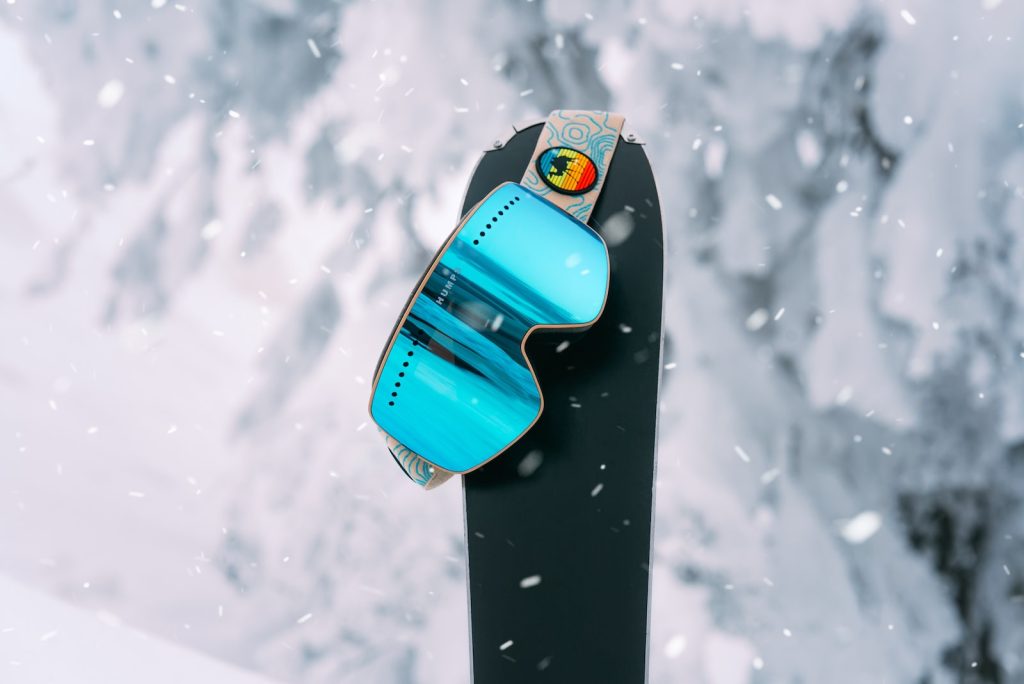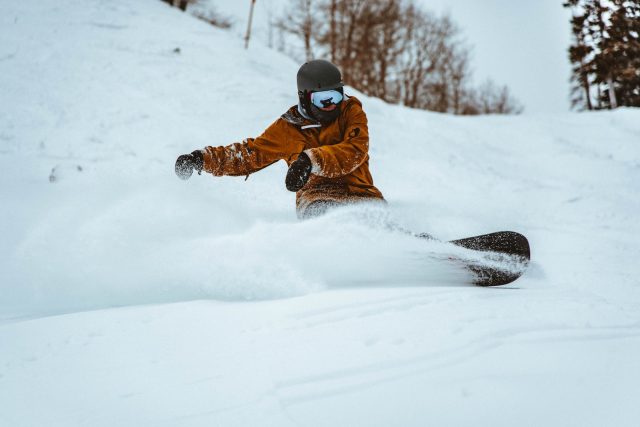Are you ready for a thrilling adventure in the snow? Look no further than snowboarding! Whether you’re a seasoned athlete or a beginner looking for a new hobby, snowboarding is an exhilarating sport that offers a unique blend of athleticism and creativity. With its roots in skateboarding and surfing, snowboarding has taken the winter sports world by storm, and for a good reason. From racing down steep slopes to mastering daring tricks and jumps, there’s never a dull moment on the board. So if you’re ready to conquer the slopes and experience the rush of adrenaline that comes with snowboarding, it’s time to hit the mountain and see what this incredible sport is all about!
Snowboarding Basics

Equipment: What You Need
When snowboarding, having the right equipment can make all the difference. Here’s a breakdown of what you’ll need to hit the slopes with confidence:
- Snowboard: The centerpiece of your gear is, of course, the snowboard. When choosing a snowboard, consider your experience level, riding style, and the terrain you’ll be shredding on. There are many different shapes, sizes, and flex patterns to choose from, so take your time to find the one that suits your needs.
- Bindings: Your bindings attach your boots to the board, so choosing comfortable ones that provide the right level of support is important. Select bindings that match your snowboard’s hole pattern to ensure a proper fit.
- Boots: Your snowboard boots are arguably the most important piece of equipment, as they provide a crucial connection between you and the board. Look for boots that fit snugly and offer the right amount of support for your riding style.
- Outerwear: Staying warm and dry is key to a successful day on the mountain. Invest in high-quality snow pants and a jacket that is waterproof and breathable to keep you comfortable in any condition.
- Accessories: Don’t forget the little things that can make a big difference, like goggles to protect your eyes from the sun and snow, gloves to keep your hands warm, and a helmet to protect your head in case of a fall.
By investing in the right snowboarding equipment, you’ll be well on your way to a successful and enjoyable day on the mountain. Always check your gear before hitting the slopes and replace any worn or damaged equipment before it becomes a safety hazard. Happy shredding!
Getting Started: Proper Positioning
When it comes to snowboarding, proper positioning is key to success. Here are some tips for getting started with the right stance and body position:
- Stance: Start by determining your stance. Your stance refers to which foot you have forward on the board. Most people are either regular (left foot forward) or goofy (right foot forward), but you can determine which feels most comfortable by sliding on a slippery surface and seeing which foot naturally goes forward. Once you’ve determined your stance, set up your bindings accordingly.
- Body Position: When you’re on the board, your knees should be slightly bent, your weight should be evenly distributed, and your shoulders should be parallel to the board. Keep your arms and hands in front of you for balance, and avoid leaning too far forward or backward.
- Feet Position: Make sure your feet are positioned properly on the board. Your front foot should be angled slightly toward the nose of the board, while your back foot should be angled slightly toward the tail. Keep your weight centered over the board for stability.
- Gearing Up: Ensure that your boots and bindings are properly tightened and adjusted to avoid slipping or discomfort.
- Practice: The best way to improve your positioning is through practice. Start on easy terrain and focus on maintaining a comfortable, balanced stance. As you progress, challenge yourself with more difficult terrain and tricks.
Remember to always be aware of your body positioning while snowboarding and adjust as needed. Proper positioning will help you stay safe on the mountain and improve your overall performance and enjoyment of the sport. Happy shredding!
Safety First: Protective Gear
When it comes to snowboarding, safety should always be your top priority. Even the most experienced riders can fall, so wearing the proper protective gear is important. Here are some must-have items:
- Helmet: A helmet is essential for protecting your head from injury. Look for a snug helmet that covers the back of your head. Make sure to replace your helmet after any significant impact, as it may have sustained damage that isn’t visible.
- Goggles: Goggles protect your eyes from wind, snow, and UV rays. Look for goggles with a comfortable fit and good visibility.
- Wrist Guards: Wrist guards can help prevent wrist injuries in the event of a fall. Look for guards that fit snugly and provide ample padding.
- Body Armor: For more advanced riders or those hitting the park, body armor can provide extra protection for your torso, back, and arms. Look for armor that fits well and doesn’t restrict your movement.
- Knee and Elbow Pads: Pads can help prevent bruises, scrapes, and more serious injuries to your knees and elbows. Look for pads with sturdy construction and a comfortable fit.
Remember to wear your protective gear while snowboarding, regardless of your skill level or experience. Inspecting your gear regularly and replacing damaged or worn items is also important. By prioritizing safety, you can enjoy a long and healthy snowboarding career.
Conditions: Choose the Right Mountain
When planning a snowboarding trip, choosing the right mountain is crucial. Different mountains offer different terrain, snow conditions, and amenities, so it’s important to do your research to find the best fit for your skill level and preferences. Here are some factors to consider:
- Terrain: Consider the type of terrain you want to ride. Do you prefer groomed runs, challenging steeps, or terrain parks with jumps and rails? Make sure the mountain you choose has the terrain you’re looking for.
- Snow Conditions: Snow conditions can vary greatly from one mountain to another, so research the average snowfall, temperature, and elevation. Look for mountains with consistent snowfall and favorable weather conditions for your trip.
- Lifts and Trails: Check out the number and type of lifts and trails available at the mountain. Are there enough trails to keep you entertained? Are there enough lifts to avoid long lines? Also, consider the type of lift (chairlift, gondola, etc.) and the ease of access to the mountain.
- Amenities: Consider the amenities available at the mountain, such as lodging, dining, and entertainment. If you’re planning an extended stay, you’ll want to make sure there are enough options to keep you comfortable and entertained off the slopes.
- Skill Level: Consider your skill level when choosing a mountain. Some mountains cater more to beginners, while others are geared toward more advanced riders. Make sure the mountain you choose has terrain that is appropriate for your skill level.
Remember, the right mountain can make all the difference in your snowboarding experience. You can find the perfect mountain for your next snowboarding adventure by considering these factors and researching.
Learning Techniques: Practice Makes Perfect
Like any sport, snowboarding requires practice and dedication to master. Here are some learning techniques to help you improve your skills on the mountain:
- Take Lessons: One of the best ways to improve your snowboarding skills is to take lessons from a certified instructor. They can help you master the fundamentals and provide feedback on your technique.
- Start Small: Start on easy terrain and work your way up to more challenging runs. This will help you build confidence and avoid injury.
- Focus on Fundamentals: Focus on mastering the fundamentals of snowboarding, such as body positioning, edge control, and turning. Once you have these skills down, you can move on to more advanced techniques.
- Use Video Analysis: Record yourself snowboarding and analyze the footage to identify areas for improvement. This can be a helpful tool for spotting errors in your technique.
- Practice Regularly: Practice regularly to build muscle memory and improve your skills. The more you practice, the more comfortable and confident you’ll become on the mountain.
Remember, learning to snowboard takes time and patience. Don’t get discouraged if you don’t see progress right away. With practice and dedication, you’ll be carving down the mountain in no time.
Conclusion: Conquer the Slopes!
In conclusion, snowboarding is an exhilarating sport that can provide a lifetime of enjoyment. Investing in the right equipment, practicing proper positioning and safety techniques, choosing the right mountain, and committing to regular practice can improve your skills and conquer the slopes. Remember to always prioritize safety, take lessons from certified instructors, and have fun! You can become a skilled and confident snowboarder with dedication and hard work, ready to take on any mountain. So, what are you waiting for? Grab your board and hit the slopes!






























